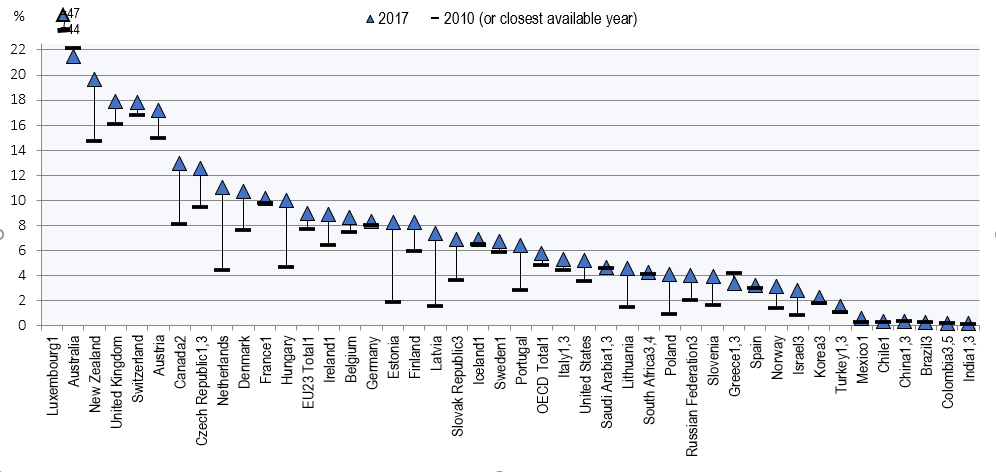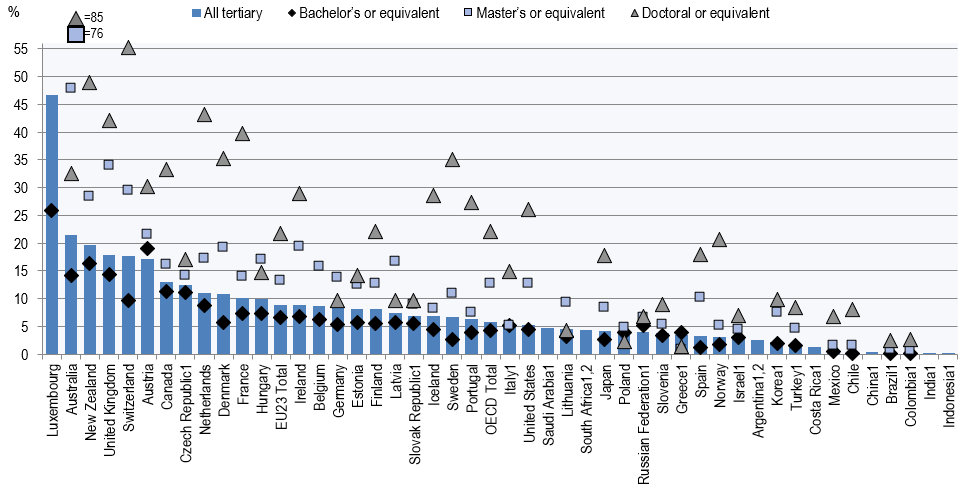Stay in the loop! Subscribe to our mailing list
In early September, the OECD released the newest edition of one of its core publications – Education at a glance 2019: OECD indicators. The publication annually provides a snapshot picture of the state of development of education across the OECD countries and a number of partner economies. It covers aspects related to the structure, finances and the performance of the aforementioned education systems. The new edition includes a focus on tertiary education and features new indicators on tertiary completion rates, doctoral graduates and their labour market outcomes, and on tertiary admission systems, as well as a dedicated section on the Sustainable Development Goal 4. In total, the analysis covers 27 key indicators, amongst which also one related to the profile of internationally-mobile students (indicator B.6).
In the area of international student mobility, the data shows further progress in transitioning towards defining internationally-mobile students based on their country of prior residence and/or education, and thus moving away from foreign citizenship-based definitions and measures. Fewer countries than in the past continue to use the latter as a proxy for mobility. The data presented in the analysis, standing for the 2016/17 academic year, show a clear growth in the number of international students world-wide, from approx. 2 million students in 1998 to 5.3 million in 2016/17. Of the latter, 3.7 million were in OECD countries, i.e. 6% more than in the previous academic year. Between 2009/10 and 2016/17, the share of incoming students increased in nearly all OECD countries, but particularly so in Estonia, Hungary, Latvia, the Netherlands and New Zealand.

Here are some of the other related highlights:
